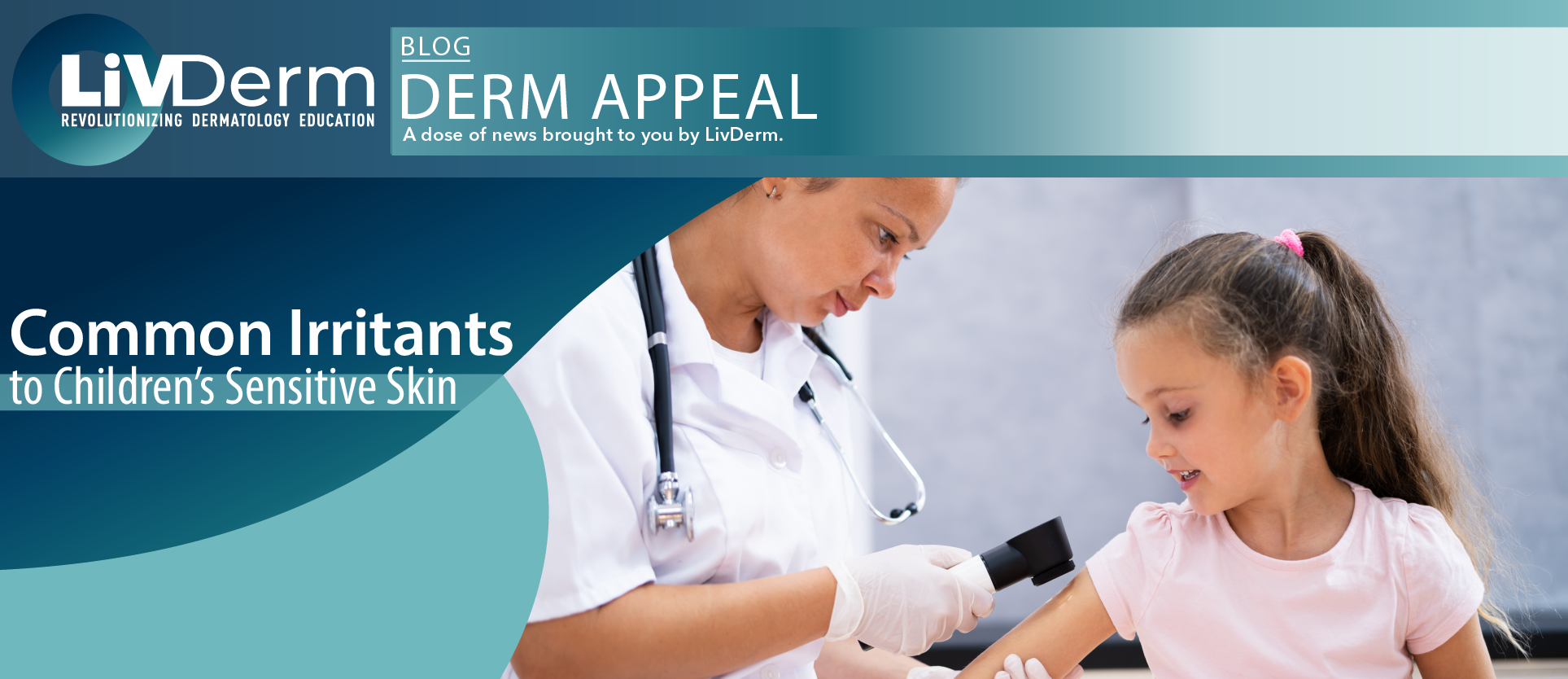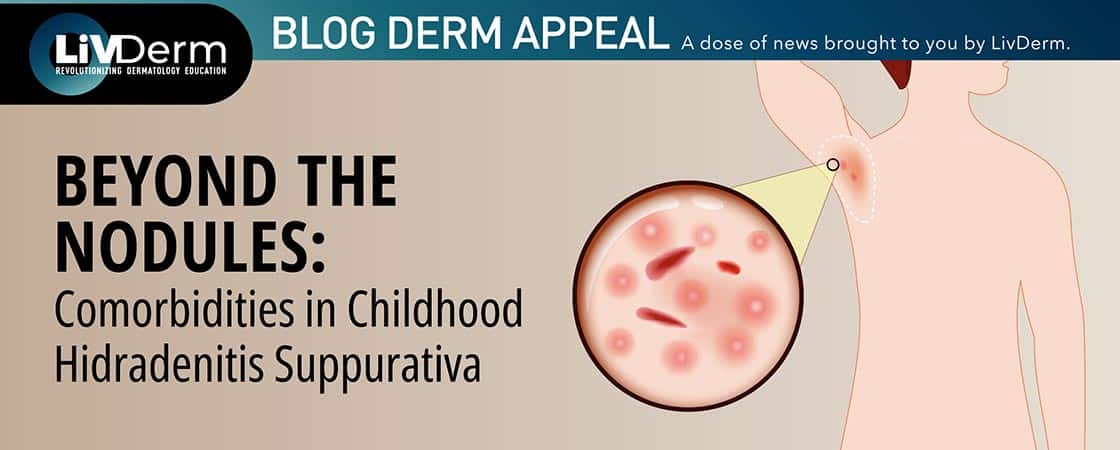Chronic skin conditions can impact a child’s wellbeing, school performance, sleep and mental health. If a skin reaction seems to occur or worsen after a child comes in contact with certain clothing, pets, plants, cosmetics or substances, it may be contact dermatitis.
Special considerations for young skin
One of the main functions of the skin is to provide a barrier to the environment. Since the barrier development continues from birth to adulthood, children’s skin is structurally different and more sensitive than that of an adult. Specifically, the stratum corneum and papillary dermis are much thinner, which leads to more transepidermal water loss (TWEL). A common physiological feature of skin conditions such as contact dermatitis is TWEL, because moisture is an important element of the cutaneous barrier. When the skin’s barrier is compromised, environmental elements are more likely to breach the surface and result uncomfortable skin conditions.
Pediatric contact dermatitis
Contact dermatitis – an inflammatory cutaneous reaction to environmental factors – is more common in children with atopic dermatitis or eczema. Symptoms of dermatitis, either atopic or contact, are skin that is itchy, painful, red, swollen, dry, cracked, peeling, bleeding, oozing, draining, crusting or blistering. The difference is that in cases of contact dermatitis, symptoms are worse on the areas of the body where the skin came in contact with the irritant or allergen.
Because children may not be able to remember or communicate what substances they’ve been in contact with, it’s important for caregivers to document the products used, medicine taken, contact with animals or plants, and other activities if contact dermatitis is suspected. Identifying and eliminating contact with allergens or irritants is the best way to prevent cutaneous reactions such as contact dermatitis.
Irritants vs. allergens
Once contact dermatitis is confirmed, it can be further classified into either irritant contact dermatitis or allergic contact dermatitis. Contact dermatitis caused by irritants is most common in children and is the skin’s reaction to substances like chemicals in soaps and detergents, fabric softeners or solvents, shampoos, hair dyes or pesticides.
Allergic contact dermatitis is a delayed, immune-mediated reaction caused by contact with sensitizing agents such as adhesives, fragrances, metals, rubber or latex, poisonous plants, animal saliva, or topical antibiotics or anti-inflammatories. In cases of either irritant or allergic contact dermatitis, reactions can be acute (symptoms appear in 24-48 hours) or manifest over weeks or months after contact with the environmental agent.
Photoallergic contact dermatitis
Another kind of contact dermatitis occurs only when the skin is exposed to both an irritating agent AND ultraviolet (UV) light. It can occur on a child’s skin after the application of a sunscreen, scented lotion, or some topical nonsteroidal anti-inflammatories, and subsequent exposure to UV light – most commonly the sun. In this kind of reaction, the agent is referred to as a photoirritant or photoallergen, and the cutaneous reaction occurs only after UV exposure. Photoallergic contact dermatitis is uncommon, but more likely in pediatric patients with a history of photosensitivity dermatitis (a sunburn-like skin reaction to even brief UV exposure). In cases of photoallergic contact dermatitis, the photoallergen or photoirritant must be identified and avoided, especially when UV exposure is likely.
Diagnosing and treating contact dermatitis in children
Diagnosing contact dermatitis is made after physical examination and patient-reported history of products used. In pediatric patients who aren’t able to report which substances could be responsible for a reaction, a patch test may be performed to determine which irritants or allergens are to blame.
Treatment for skin conditions such as contact dermatitis will depend on the child’s age, overall health and severity of the reaction. Often, the child’s dermatologist will suggest washing the skin as soon as possible after suspected contact or reaction. After washing, the provider may recommend using a cold, wet compress to reduce inflammation, applying a topical corticosteroid (prescription or over the counter) to lessen itching, or oral antihistamines to reduce symptoms. Rarely, contact dermatitis can cause a severe reaction that results in difficulty breathing. If this happens, patients are urged to call 911 immediately for help.
Key takeaways
Skin conditions such as contact dermatitis can be lifelong and have serious physiological and psychological impacts on children. Identifying and avoiding environmental triggers is the best strategy to manage contact dermatitis in pediatric patients. If cutaneous reactions do occur, having a treatment strategy that includes home skin care, and over the counter or prescription medicine will ensure the uncomfortable condition is resolved promptly.

















